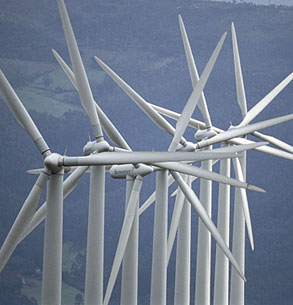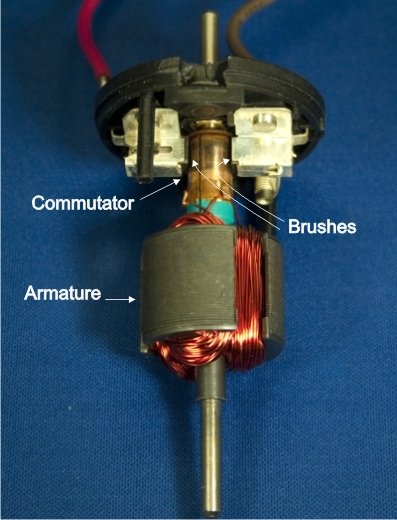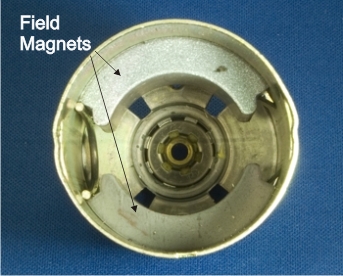| Intermediate Technology Education | Energy and Power Technology | Design Stage 2 | Topic 6 | Optional Activity 1 |
Wind Generators
- Demonstrate how a small DC motor can be used as a DC generator
- Show that different generators have different electrical properties by measuring the electrical output
- Show that different propeller characteristics have an effect on how much electrical energy is produced.
Renewable Wind Energy

Figure. Large Wind Generators
Wind energy can be used at the smallest level to turn a DC generator to charge a small battery or on a large scale to generate AC electricity for a nation wide power grid. Typically the wind generators shown above can deliver 1.5 megawatts of power. To put that in perspective, the power house at Churchill Falls, Labrador, can produce 5400 megawatts. It would take over 3600 wind generators of this type to produce as much energy. But wind is free, and with some help from governments many countries are investing in a technology that is non-polluting in the traditional sense.
You can join the "green side" by learning how to construct and evaluate a wind generator using cheap, common materials. In the last two activities you learned how Alternating Current was produced and how to recognize its characteristics. Small DC motors which are found in toys and other devices that need movement are constructed of the following components:
- A rotating coil of wire (called an armature)
- A set of permanent magnets (field magnets)
- A device to get the electricity in or out of the armature called a commutator (or split ring)
- And brushes which touch the spinning armature and are connected to the lead wires

Figure. Internal Components of a small DC motor/generator

Figure. Permanent Magnets inside the motor/generator case
If you add a source of movement, this sounds like a recipe for energy generation. The commutator and brushes turn the Alternating Current the coil of wire and magnets produce into Direct Current mechanically. But which motors make the best generators? That is what you will investigate in the activity that follows.
For More information
For more information on these topics, check out these web pages
When you are ready, go to Your Turn